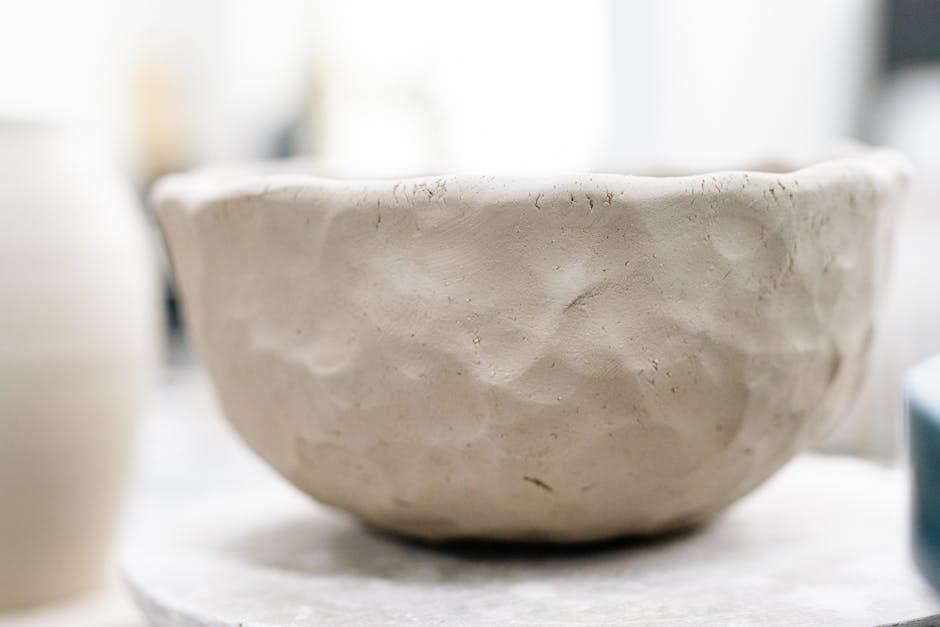Custom hydroponic fertilizers offer tailored nutrition for plants, optimizing growth and yield. By mixing ingredients like bone meal, Epsom salt, and household waste, growers can create cost-effective, eco-friendly solutions.
This approach allows for precise control over nutrient levels, ensuring plants receive exactly what they need at each stage. DIY blends also reduce reliance on commercial products.
Why DIY Hydroponic Fertilizers?
Creating custom hydroponic fertilizers allows growers to tailor nutrient blends to their plants’ specific needs, enhancing growth and yield. DIY solutions are cost-effective, reducing reliance on commercial products while offering flexibility. By using household waste like garlic peels, eggshells, and coffee grounds, gardeners can create eco-friendly fertilizers. This approach also minimizes environmental impact compared to synthetic options. Custom blends enable precise control over nutrient ratios, ensuring optimal plant nutrition at every growth stage. Additionally, DIY fertilizers empower growers to experiment and adapt formulations based on plant responses, fostering a deeper understanding of hydroponic nutrition. This method is particularly appealing for small-scale or organic growers seeking sustainable and efficient gardening practices.

Benefits of Custom Fertilizer Blends

Custom fertilizer blends provide precise nutrient control, ensuring plants receive exactly what they need for optimal growth. This tailored approach minimizes waste and reduces the risk of over-fertilization. By adjusting NPK ratios and incorporating organic ingredients like bone meal or fish emulsion, growers can address specific plant requirements. Custom blends also allow for cost savings by utilizing household waste, such as garlic peels and coffee grounds, which are rich in essential micronutrients. Additionally, DIY fertilizers promote sustainability by reducing reliance on synthetic products. They also give growers flexibility to adapt formulations based on plant responses and growth stages. This personalized approach fosters healthier plants, higher yields, and a more efficient hydroponic system overall.
Essential Nutrients for Hydroponic Plants
Hydroponic plants require a balanced mix of macronutrients (N, P, K) and micronutrients like calcium, magnesium, sulfur, boron, copper, iron, manganese, zinc, and molybdenum for optimal growth.
Primary Macronutrients: NPK Ratio
Nitrogen (N), phosphorus (P), and potassium (K) are the primary macronutrients essential for hydroponic plant growth. Nitrogen promotes leaf development and green color, while phosphorus supports root formation and flower production. Potassium enhances overall plant health, resistance, and fruit development. The NPK ratio (e.g., 20-20-20) varies depending on plant type and growth stage. Seedlings may benefit from higher nitrogen, while flowering plants require more phosphorus. A balanced ratio ensures optimal nutrient uptake. DIY fertilizers allow customization of NPK levels, enabling growers to tailor mixes for specific crops. Adjusting these ratios can significantly impact yield and plant vitality. Proper balance is crucial to avoid nutrient deficiencies or over-fertilization, which can stress plants. By understanding and controlling the NPK ratio, growers can create precise, effective hydroponic fertilizers.
Secondary Macronutrients: Calcium, Magnesium, and Sulfur
Calcium, magnesium, and sulfur are essential secondary macronutrients for hydroponic plant growth. Calcium strengthens cell walls and supports root development, while magnesium is crucial for photosynthesis and energy production. Sulfur aids in the synthesis of amino acids and vitamins, promoting overall plant health. These nutrients often come from natural sources like dolomitic lime, gypsum, and agricultural lime. Adding these to DIY fertilizer blends ensures robust plant structure and function. Proper levels of these macronutrients prevent deficiencies, which can lead to stunted growth or yellowing leaves. Balancing secondary macronutrients with primary NPK ratios creates a comprehensive nutrient profile, fostering healthy plant development and maximizing yield in hydroponic systems.
Micronutrients: Boron, Copper, Iron, Manganese, Zinc, and Molybdenum
Micronutrients like boron, copper, iron, manganese, zinc, and molybdenum play vital roles in plant health, even in small quantities. Boron supports cell wall development and flower formation, while copper aids in enzyme production and photosynthesis. Iron is essential for chlorophyll production and oxygen transport, and manganese helps enzymes function and improves stress tolerance. Zinc promotes growth hormone production and protein synthesis, and molybdenum is key for nitrogen metabolism. These micronutrients can be sourced from natural materials like kelp meal or added in small amounts via zinc sulfate. Balancing these in DIY blends ensures plants receive complete nutrition, preventing deficiencies that can stunt growth or reduce yields. Proper micronutrient levels enhance overall plant vitality and productivity in hydroponic systems.

DIY Fertilizer Recipes for Hydroponics
DIY fertilizer recipes combine natural ingredients like bone meal, fish emulsion, and Epsom salt for tailored nutrition. These blends offer flexibility to adjust nutrients for optimal plant growth.
Organic Fertilizer Options: Bone Meal, Fish Emulsion, and Epsom Salt
Organic fertilizers like bone meal, fish emulsion, and Epsom salt provide natural, sustainable nutrition for hydroponic plants. Bone meal is rich in phosphorus, promoting root development and flower production. Fish emulsion offers nitrogen, essential for leaf growth and overall plant health. Epsom salt contributes magnesium and sulfur, enhancing nutrient absorption and plant vigor. These ingredients can be mixed in various ratios to create balanced, eco-friendly solutions. For example, combining 1 cup of bone meal with 1 tablespoon of fish emulsion and 1 teaspoon of Epsom salt in 5 gallons of water provides a nutrient-rich hydroponic solution. These organic options are cost-effective, reduce environmental impact, and cater to plants’ specific needs at different growth stages.
Custom NPK Blends: Adjusting Ratios for Different Plant Stages
Custom NPK blends enable growers to tailor fertilizer ratios to their plants’ specific needs at different growth stages. For seedlings and vegetative growth, a balanced N-P-K ratio like 10-10-10 supports healthy leaf and stem development. During flowering, increasing phosphorus to a ratio like 15-30-15 enhances bud formation and flower production. For fruiting stages, a higher potassium ratio, such as 10-10-20, promotes fruit development and overall plant health. Growers can adjust these ratios by adding more phosphorus-rich bone meal during flowering or potassium-rich wood ash during fruiting. Additionally, incorporating secondary nutrients like calcium and magnesium ensures proper nutrient absorption. Regular testing and observing plant responses help fine-tune the ratios, ensuring optimal nutrient levels and maximizing plant potential in hydroponic systems.
Using Household Waste: Garlic Peels, Eggshells, and Coffee Grounds
Household waste like garlic peels, eggshells, and coffee grounds can be repurposed as natural fertilizers in hydroponic systems. Garlic peels are rich in phosphorus and potassium, which promote root development and overall plant health. Eggshells, high in calcium, support cell wall strength and prevent nutrient deficiencies. Coffee grounds provide nitrogen, phosphorus, and potassium, making them an excellent addition to fertilizer blends. To use these, steep garlic peels in water for a few days to create a liquid solution, crush eggshells into a fine powder, or mix coffee grounds directly into the nutrient solution. These eco-friendly options reduce waste and provide essential nutrients for plants, making them a sustainable and cost-effective choice for hydroponic gardening. Regular use of these waste materials ensures a steady supply of micronutrients for optimal plant growth.

Application and Safety Tips
Always dilute fertilizers to recommended levels and wear protective gear when mixing. Avoid over-fertilizing to prevent root burn. Test solutions before applying to plants.
How to Mix Fertilizers Safely
To ensure safe mixing of hydroponic fertilizers, start by gathering all ingredients and equipment in a well-ventilated area. Always wear gloves and protective eyewear to avoid skin and eye irritation.
Dissolve solid fertilizers like bone meal or agricultural lime in warm water first, stirring thoroughly to prevent clumping. For liquid ingredients, mix them separately before combining with solids to maintain even distribution.
Gradually add the fertilizer blend to water, stirring continuously to avoid uneven concentration. Never mix fertilizers directly in the hydroponic system to prevent shock to the plants.
Test the pH and nutrient levels of the solution before application. If unsure, start with a diluted version and adjust gradually based on plant response.
Best Practices for Applying Hydroponic Fertilizers
When applying custom hydroponic fertilizers, always test the solution’s pH and nutrient levels before introducing it to your system. Start with a diluted version and gradually increase strength based on plant response.
Apply fertilizers during the plant’s active growing phase, avoiding times of stress or transplantation. Monitor EC (electrical conductivity) levels to ensure they remain within the optimal range for your plants.
Avoid over-fertilizing, as this can lead to root burn and nutrient lockout. Use a balanced NPK ratio and adjust micronutrients according to plant-specific needs. Regularly flush the system to prevent mineral buildup.
Keep detailed records of application rates and plant responses to refine your fertilizer regimen over time. This ensures a consistent and effective feeding schedule for healthy growth.
